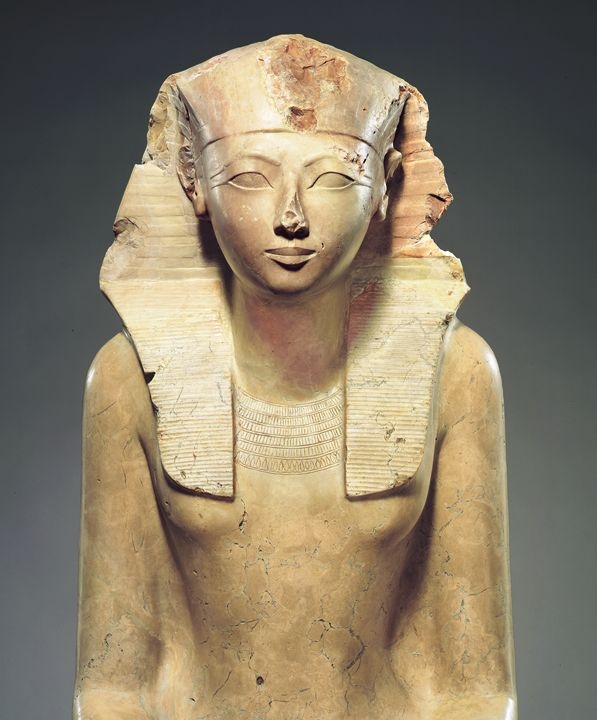
Hatshepsut
Hatshepsut was one of the few female pharaohs of ancient Egypt, reigning in the 18th dynasty. She is often regarded as one of Egypt's most successful pharaohs, known for her extensive building projects, including her mortuary temple at Deir el-Bahari, and for establishing trade networks. Hatshepsut's unique position as a female ruler in a male-dominated society has made her a subject of fascination in both historical and feminist studies. She was recently mentioned in the news due to the discovery of her husband's tomb, Thutmose II, which also included artifacts associated with her.
Born on Jan 01, 1507 (518 years old)
Global Media Ratings
Countries Mentioned
| Country | Mentions | Sentiment | Dominance | + Persistence | x Population | = Reach | x GDP (millions) | = Power |
|---|---|---|---|---|---|---|---|---|
| Egypt | 1 | 8.00 | 0.09% | +0% | 102,334,404 | 92,527 | $303,000 | 274$ |
| Totals | 1 | 102,334,404 | 92,527 | $303,000 | 274$ |
Interactive World Map
Each country's color is based on "Mentions" from the table above.
Recent Mentions
 Egypt:
Hatshepsut is recognized as the first female pharaoh of Egypt and built her temple to commemorate her reign.
8
Egypt:
Hatshepsut is recognized as the first female pharaoh of Egypt and built her temple to commemorate her reign.
8
 Guatemala:
Hatshepsut was a female pharaoh whose daughters' mummified remains are displayed in the museum.
6
Guatemala:
Hatshepsut was a female pharaoh whose daughters' mummified remains are displayed in the museum.
6
 Egypt:
Hatshepsut is highlighted in the film as a symbol of women's empowerment in ancient Egypt.
8
Egypt:
Hatshepsut is highlighted in the film as a symbol of women's empowerment in ancient Egypt.
8
 Egypt:
Hatshepsut is mentioned as one of the pharaohs whose artifacts will be showcased in the Grand Egyptian Museum.
8
Egypt:
Hatshepsut is mentioned as one of the pharaohs whose artifacts will be showcased in the Grand Egyptian Museum.
8
 Slovenia:
Hatshepsut is considered one of the most important female rulers of ancient Egypt.
9
Slovenia:
Hatshepsut is considered one of the most important female rulers of ancient Egypt.
9
 Austria:
Hatshepsut was depicted with a beard like a male pharaoh and became regent after the death of her husband and half-brother, Pharaoh Thutmose II.
7
Austria:
Hatshepsut was depicted with a beard like a male pharaoh and became regent after the death of her husband and half-brother, Pharaoh Thutmose II.
7
 Austria:
Hatshepsut was depicted with a beard like a male pharaoh.
7
Austria:
Hatshepsut was depicted with a beard like a male pharaoh.
7
 Brazil:
Hatshepsut is another royal mummy that was moved during the procession to the Museum of Egyptian Civilization.
6
Brazil:
Hatshepsut is another royal mummy that was moved during the procession to the Museum of Egyptian Civilization.
6
 Australia:
Hatshepsut was a significant figure in ancient Egypt, known for her mortuary temple in Luxor.
9
Australia:
Hatshepsut was a significant figure in ancient Egypt, known for her mortuary temple in Luxor.
9
 Uruguay:
Hatshepsut became a powerful regent and later pharaoh of Egypt.
9
Uruguay:
Hatshepsut became a powerful regent and later pharaoh of Egypt.
9